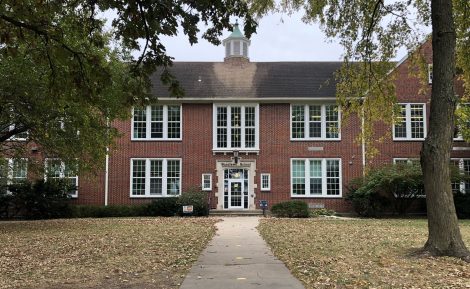So long, sugary drinks
Industry to stop selling to schools
The vending machines at the entrance of Lawrence High School are bursting with sugary beverages: Coke, Pepsi, Dr. Pepper and so on.
That’s about to change.
Under a deal announced Wednesday morning, the soft drink industry will stop selling most sodas in the nation’s public schools, instead offering diet sodas, unsweetened juices, low-fat milk and water.
“Not cool,” said Esbensen Mette, 17, an LHS junior who bought a Gatorade as classes let out for the day.
Dr. James Casey, who runs the Healthy Hawks childhood obesity clinic at the University of Kansas Hospital, wasn’t surprised by that reaction.
“It’s going to make people mad, of course, because they’re addicted to sugar,” he said.
But eliminating high-calorie drinks from school won’t solve the growing problem of overweight kids, he said.
“Just because they’re not going to get it in schools, doesn’t mean they can’t get it somewhere else,” Casey said.
Tiny sales
The settlement comes amid growing concerns about childhood obesity. According to the American Obesity Assn., the percentage of American boys ages 6-11 who were obese nearly quadrupled in 30 years – from 4.3 percent in the early 1970s to 16 percent in 2000. High-calorie drinks are often cited as one reason for the rise.

“In general, (obesity numbers) are markedly increased,” Casey said. “You can look at any survey.”
Wednesday’s deal was announced by the William J. Clinton Foundation and was agreed to by the American Beverage Assn, comprised of industry giants such as Cadbury Schweppes PLC, Coca-Cola Co. and PepsiCo Inc.
“This is a bold step forward in the struggle to help 35 million young people lead healthier lives,” former President Clinton said at a news conference. “This one policy can add years and years and years to the lives of a very large number of young people.”

Lawrence High School students Stella Finch, left, sipping on a Fanta Strawberry soft drink and Sarah Jackson, with a Sprite, say they often get a soft drink during lunch or at the end of the school day. Soft drink companies today announce nationally they are voluntarily removing high-calorie, sugary drinks from schools.
How quickly the changes take hold will depend in part on individual school districts’ willingness to alter their existing contracts, the alliance said. The companies agreed to work to implement the changes at 75 percent of the nation’s public schools by the 2008-09 school year, and at all public schools a year later. Lawrence officials didn’t have a timeline for changes to vending machines here on Wednesday.
The move shouldn’t have much effect on the $63 billion beverage industry’s bottom line, said John Sicher, editor and publisher of Beverage Digest, which compiles extensive data on the industry.
“The sale of sugar-carbonated sodas in schools is a tiny, tiny part of their overall volume,” Sicher said. “The impact is more in terms of responsibility and accountability to the consumer.”
No choices
Lawrence school officials were already working on a wellness policy that probably would have greatly restricted the sales of soda to students. No such sales are allowed in elementary schools; junior high students can buy pop after classes end for the day, and high school students have daylong access to soft drink vending machines.
“That works for me,” Supt. Randy Weseman said of the news. “We’re working on our wellness policy anyway, so this fits in with that. We welcome their help.”

Lawrence High School sophomore Zach Guy selects a soft drink from a vending machine in the commons area at LHS. Soft drink companies on Wednesday announced that they will stop selling most sodas in the nation's public schools.
Linda Robinson, a school board member, wasn’t so sure that an outright ban on soda was the way to go. Students must be taught to make healthy choices, she said.
“It isn’t an abstinence-only thing,” she said. “It’s about moderation and making healthy choices, and this takes away that choice.”
At least one LHS student seemed to agree. Lydia Shontz, 17, a junior, noted that other vending machines in the school still contain chips, cupcakes and other high-calorie snacks.
“It’s just part of the problem,” she said of soft drinks. “If they’re going to solve the problem, they’re only doing half the work.”
Casey, the obesity expert, agreed. Cutting out soft drinks is only one part of a common-sense plan to lose weight, he said.
“Eat smart, exercise more,” he said. “Eat smart, exercise more.”
More on junk food in schools
- 6News video: Soft drink companies pull soda from Lawrence schools
- Junk-food plan leaves sour taste in many mouths (04-14-06)
- 6News video: Deputy Superintendent chats at Newscenter about schools
and junk food (04-13-06)
- Deputy Supt. Bruce Passman chats about efforts to curb junk food in
schools (04-13-06)
- School leaders ready to curb junk food (04-11-06)
- Bill aims to rid schools of junk food options (04-07-06)







